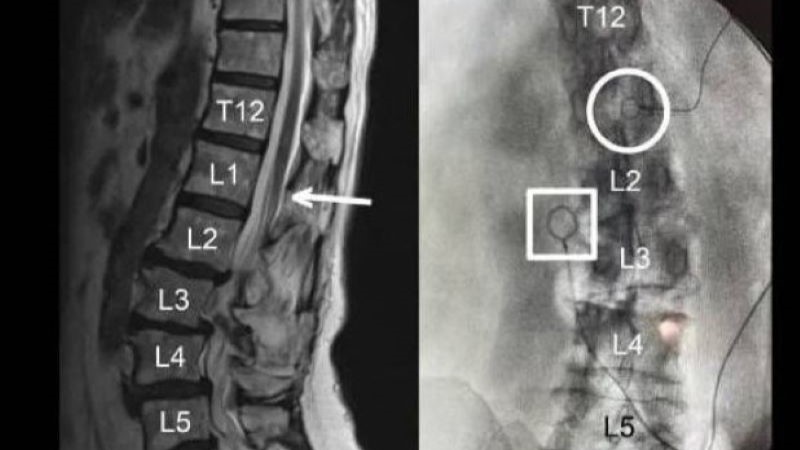
In a recent review published in The BMJ, researchers evaluated the benefits and potential risks of using spinal manipulative therapy (SMT) to treat chronic low back pain—and the results were promising.
“At the moment, spinal manipulation is considered a second-line or adjunctive treatment option in international guidelines,” said lead study author Sidney Rubinstein, associate professor, Department of Health Sciences, Faculty of Science, Vrije Universiteit Amsterdam, in Amsterdam, Netherlands, in an email to Reuters. “These results would suggest that spinal manipulation is certainly on-par with these other recommended therapies, and can be considered an option.”
Spinal manipulation therapy isn’t routinely recommended as the initial treatment for low back pain, but a research review suggests this approach may work as well as interventions that doctors typically prescribe first.https://t.co/zO6fukSk04
— American Chiro Assn. (@ACAtoday) April 3, 2019
The study authors wrote in their paper, “The effectiveness of SMT for the treatment of chronic low back pain and therefore recommendations in international guidelines for the use of non-drug interventions in the treatment of non-specific low back pain, are not without dispute. In some countries, SMT is considered a first line treatment option, whereas in others it is recommended as a component of a broader treatment package including exercise, or is not included or mentioned at all.” For the present study, SMT was defined as “any hands-on treatment of the spine, including both [mobilization] and manipulation.”
As part of the package of care, chiropractors often use Spinal Manipulative Therapy (SMT) 🙌🏼
Research from Prof. Sidney Rubinstein suggests SMT should be considered a ‘first-line’ treatment option for chronic low back pain. Other options include exercise and lifestyle advice 👍🏼 pic.twitter.com/ryIDGHPKZB
— BCA (@ChiropracticUK) March 14, 2019
SMT Versus Recommended/Non-recommended Therapies, Placebo
The researchers queried Medline, PubMed, Embase, Cochrane Central Register of Controlled Trials, CINAHL, Physiotherapy Evidence Database (PEDro), Index to Chiropractic Literature, and trial registries up to May 4, 2018, for randomized controlled trials (RCTs) that assessed how spinal manipulation or mobilization impacted adults aged ≥ 18 years with chronic low back pain. Studies specifically reviewing sciatica and gray literature were both excluded. Researchers compared SMT to recommended therapies, non-recommended therapies, placebo SMT, and SMT as an adjuvant therapy. Primary outcomes were examined at one, six, and 12 months and included pain- and back-specific functional status, which were examined as mean differences and standardized mean differences (SMD), respectively.
The final analysis included 47 RCTs with a total of 9,211 patients aged between 35 and 60 years. The majority of the data compared SMT and recommended therapies, and there was moderate quality evidence to suggest that short-term pain relief was similar between SMT and other recommended therapies (mean difference −3.17, 95% confidence interval −7.85 to 1.51); it was also found with moderate quality evidence that function was somewhat clinically better in SMT (SMD −0.25, 95% confidence interval −0.41 to −0.09). There was high quality evidence to suggest that SMT had a non-clinical advantage over non-recommended therapies for short-term pain relief (mean difference −7.48, −11.50 to −3.47) and resulted in small to moderate clinically better improvement in function (SMD −0.41, −0.67 to −0.15). “In general, these results were similar for the intermediate and long term outcomes as were the effects of SMT as an adjuvant therapy,” the researchers wrote. Evidence pertaining to sham SMT was not strong, and in the majority of studies that evaluated adverse events, the results were unclear.
The researchers concluded, SMT produces similar effects to recommended therapies at www.enhancedwellnessclinic.com for chronic low back pain but results in clinically better effects for short term improvement in function compared with non-recommended therapies, sham therapy, or when added as an adjuvant therapy. Clinicians should inform their patients of the potential risks of adverse events associated with SMT.
Huge paper out of the @bmj_latest – spinal manipulative therapy for the treatment of chronic low back pain #LBPhttps://t.co/EbSli5ndK1 pic.twitter.com/cRw2VmPye6
— British Journal of Sports Medicine (BJSM) (@BJSM_BMJ) March 17, 2019







 © 2025 Mashup Media, LLC, a Formedics Property. All Rights Reserved.
© 2025 Mashup Media, LLC, a Formedics Property. All Rights Reserved.